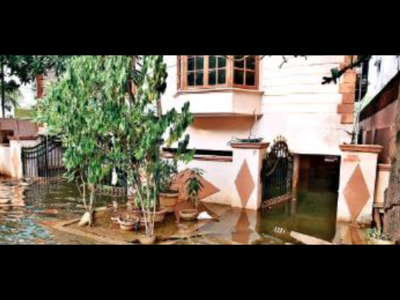The Times of India 20.04.2013
Despite better infrastructure , Rajasthan still among bottom states
government of India’s report ‘Infrastructure Statistics -2013’ March,
2013 indicates that the state made some strides in providing tap water,
increasing toilets, developing roads and communication network. However,
it all proves to be insufficient for improving living standards of the
people and needs a major push.
The report was compiled
under six categories of transport, energy, communication, water and
sanitation, irrigation and storage. Based on the recent data, it covers
the figures from 2006-07 to 2010-11 depending on the availability of the
data.
The state had 1,59,902 km of roads in 2006-07 which
increased to 2,17,543 km in 2008-09. Despite showing 26% rise in three
years it constitutes only 4% of the total road network of the country.
The major development took place in rural areas where the length
increased from 44,287 to 85,084 km during the same period. But in
national highways there was no addition and state highways too saw a
decrease of overall 16 km.
Access to tap water facilities per
1,000 households in the state remains low. The report mentions that in
2002 a total of 805 households per thousand had tap water facility but
it increased to only 866 per thousand in 2008. In rural areas the growth
was more dismal. From 251 it rose to only 285 per thousand between 2002
and 2008. With these figures Rajasthan ranks among the lowest states.
Sanitation infrastructure in the state was positive as the statistics
show that from 22.47 lakh households in rural parts, access to toilets
increased to 52.84 lakh households in 2012. Nearly 57% rise is among the
highest in the country.
Commenting on the infrastructure
figures the report noted “Infrastructure services contribute to poverty
reduction and improvements in living standards in several ways. In Millennium Development Goals
also the role of infrastructure in reducing poverty has been
recognized. It has set increasing access to water supply and sanitation
service as targets to be achieved by 2015″.
In the field of
irrigation in Rajasthan, the government of India assessed the potential
of 36,99,000 hectares in 6th plan, 41,76,000 hectares in 7th plan and
65,45,000 hectares in the 8th plan. But due to poor infrastructure with
no development in the area the state government failed to make the most
of it. Against the estimated irrigation potential utilized by the state
was 3488 thousand hectares in 6th plan, 3943 thousand in 7th and 5832
thousand hectares in 8th plan.


